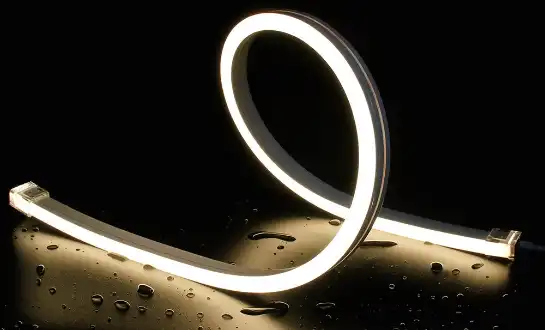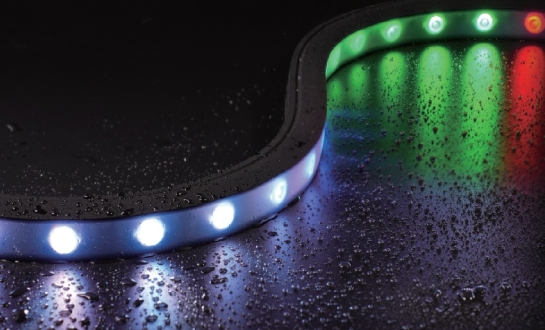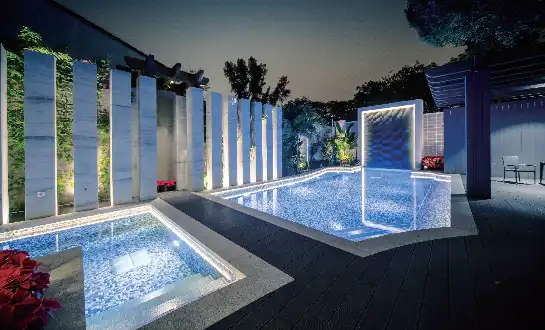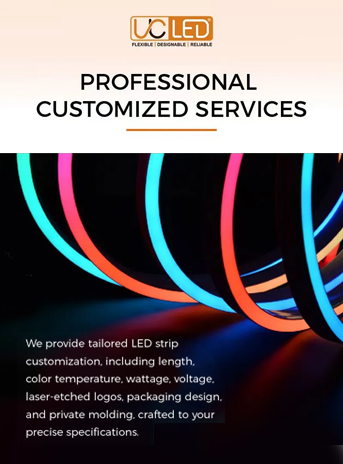The Ultimate Flexible LED Strip Guide: Selection, Installation, and Tips
Flexible LED strip lights have revolutionized the lighting industry, offering versatile and energy-efficient illumination solutions for various applications. This comprehensive guide will walk you through the process of selecting, installing, and maintaining flexible LED strips, ensuring you make informed decisions for your lighting projects. From understanding technical specifications to exploring creative installation ideas, we'll cover everything you need to know to harness the full potential of these innovative lighting solutions. Whether you're a DIY enthusiast or a professional installer, this guide will equip you with the knowledge to transform any space with the perfect flexible LED strip lighting.

Grasping Flexible LED Strip Lights: Types and Specifications
Different Types of Flexible LED Strips
Flexible LED strip lights come in various types, each designed for specific applications and environments. The most common types include:
- Standard flexible LED strips: These are the most versatile and widely used strips, suitable for general lighting and decorative purposes.
- Waterproof LED strips: Ideal for outdoor applications or areas exposed to moisture, these strips are encased in a protective silicone or epoxy coating.
- RGB and RGBW strips: These multicolor strips allow for dynamic color changing and effects, perfect for creating ambiance or accent lighting.
- High-density LED strips: With more LEDs per meter, these strips provide brighter and more uniform illumination.
- COB (Chip on Board) LED strips: Offering a seamless light appearance, COB strips are perfect for creating continuous lines of light without visible dots.
Understanding the differences between these types will help you choose the right flexible LED strip for your specific needs and ensure optimal performance in your intended application.
Key Technical Specifications
When selecting flexible LED strip lights, it's crucial to consider several technical specifications:
- Voltage: Most flexible LED strips operate on 12V or 24V DC power. Ensure compatibility with your power source.
- Wattage per meter: This determines the power consumption and brightness of the strip. Higher wattage generally means brighter output.
- LED density: Measured in LEDs per meter, this affects the uniformity and overall brightness of the strip.
- Color temperature: Measured in Kelvin (K), this determines the warmth or coolness of the light. Lower values (2700K-3000K) produce warm light, while higher values (5000K-6500K) produce cool, daylight-like illumination.
- CRI (Color Rendering Index): A measure of how accurately the light renders colors. Higher CRI values (90+) are ideal for applications where color accuracy is important.
- IP rating: Indicates the level of protection against dust and water. For example, IP65 strips are dust-tight and protected against water jets.
- Beam angle: Determines the spread of light from the LEDs. Wider angles provide more diffuse lighting, while narrower angles offer more focused illumination.
By understanding these specifications, you can make an informed decision when selecting flexible LED strips that meet your project requirements and performance expectations.
Installation Techniques and Best Practices
Preparation and Planning
Before installing flexible LED strip lights, thorough preparation and planning are essential:
- Measure the installation area accurately to determine the required length of LED strips.
- Calculate the total power consumption to select an appropriate power supply.
- Consider the surface material and choose suitable mounting options (adhesive backing, mounting clips, or channels).
- Plan the wiring route for power and, if applicable, control signals.
- Ensure proper ventilation to prevent overheating, especially in enclosed spaces.
Taking the time to plan your installation will help avoid common pitfalls and ensure a smooth, professional-looking result.
Step-by-Step Installation Guide
Follow these steps for a successful flexible LED strip installation:
- Clean the mounting surface thoroughly to ensure good adhesion.
- Cut the LED strip to the desired length, if necessary, using the designated cutting points.
- Connect the power supply to the LED strip, ensuring proper polarity.
- If using a controller, connect it between the power supply and the LED strip.
- Test the LED strip before final installation to verify proper functioning.
- Remove the adhesive backing (if present) and carefully apply the strip to the prepared surface.
- Secure any loose sections with additional mounting clips or adhesive.
- For longer runs, use solderless connectors or solder connections to join multiple strips.
- Install any diffusers or channels to enhance light distribution and protect the strip.
Remember to follow manufacturer guidelines and local electrical codes throughout the installation process.
Troubleshooting Common Issues
Even with careful planning, you may encounter some issues. Here are solutions to common problems:
- Uneven brightness: Ensure the power supply is adequate for the entire strip length. For longer runs, consider using amplifiers or multiple power injection points.
- Flickering: Check all connections for loose contacts. If using a dimmer, ensure it's compatible with LED strips.
- Color inconsistency: For RGB strips, verify that all channels (Red, Green, Blue) are functioning correctly. Consider using a higher quality strip with better color binning.
- Adhesive failure: Clean the surface again and use additional mounting clips or a stronger adhesive designed for LED strips.
- Overheating: Improve ventilation or consider using a lower wattage strip. Ensure the power supply is not overloaded.
By addressing these common issues promptly, you can maintain the performance and longevity of your flexible LED strip installation.
Creative Applications and Design Tips
Innovative Lighting Ideas
Flexible LED strip lights offer endless possibilities for creative lighting design. Consider these innovative applications:
- Under-cabinet lighting: Illuminate kitchen workspaces with warm white strips for functional and aesthetic appeal.
- Cove lighting: Create a soft, ambient glow in living spaces by installing strips in ceiling coves or crown molding.
- Backlit mirrors: Enhance bathroom vanities with edge-lit mirrors for a modern, luxurious look.
- Stair lighting: Improve safety and ambiance by integrating LED strips into stair risers or handrails.
- TV backlighting: Reduce eye strain and create a cinematic experience with bias lighting behind televisions.
- Outdoor accent lighting: Highlight landscaping features or architectural elements with weatherproof LED strips.
- Display case illumination: Showcase collections or retail products with high CRI strips for accurate color rendering.
- Vehicle customization: Add personal flair to cars, boats, or RVs with automotive-grade LED strips.
These applications demonstrate the versatility of flexible LED strips in enhancing both residential and commercial spaces.
Maximizing Energy Efficiency
To optimize the energy efficiency of your flexible LED strip light installation:
- Use LED strips with high lumens per watt ratings for maximum light output with minimal power consumption.
- Implement dimming controls to adjust light levels based on time of day or occupancy.
- Consider motion sensors for areas with intermittent use to automatically turn lights on and off.
- Choose cool white or daylight color temperatures for task lighting areas to reduce the perceived need for higher brightness levels.
- Utilize reflective surfaces or light-colored materials in the installation area to enhance light distribution and reduce the number of strips needed.
By implementing these strategies, you can create energy-efficient lighting solutions that reduce electricity costs while maintaining optimal illumination.
Maintenance and Longevity Tips
To ensure the longevity and performance of your flexible LED strip installation:
- Regularly clean the strips with a soft, dry cloth to remove dust and maintain light output.
- Inspect connections periodically, especially in areas subject to vibration or temperature fluctuations.
- Monitor the power supply for signs of overheating or reduced performance.
- For outdoor installations, check weatherproofing seals annually and reapply sealant if necessary.
- Consider using a surge protector to safeguard against power spikes that could damage the LED strips or controllers.
- Keep a record of installation date and specifications for easy replacement or expansion in the future.
- Proper maintenance will help preserve the quality and efficiency of your LED strip lighting, ensuring years of reliable operation.
Conclusion
Flexible LED strip lights offer a world of possibilities for innovative and efficient lighting solutions. By understanding the types, specifications, and installation techniques, you can create stunning lighting designs that enhance any space. Remember to prioritize proper planning, installation, and maintenance to maximize the performance and longevity of your LED strip lighting projects. For expert advice on selecting the perfect flexible LED strip lights for your specific needs or to explore custom lighting solutions, don't hesitate to reach out to our team at Linda@uc-led.com.
References
1. "LED Lighting: A Primer to Lighting the Future" by Sal Cangeloso, published by O'Reilly Media (2012)
2. "Practical Lighting Design with LEDs" by Ron Lenk and Carol Lenk, published by Wiley-IEEE Press (2017)
3. "The LED Lighting Guide: A Practical Guide to LED Lighting Systems and Their Design" by Gareth John, published by CRC Press (2019)
4. "Lighting Design Basics" by Mark Karlen and James R. Benya, published by Wiley (2017)
5. "Digital LED Lighting Fundamentals: Designs and Applications" by Jinming Zhang, published by Springer (2020)

Looking for high-quality LED flexible strips? Click for a free quote in 24 hours!
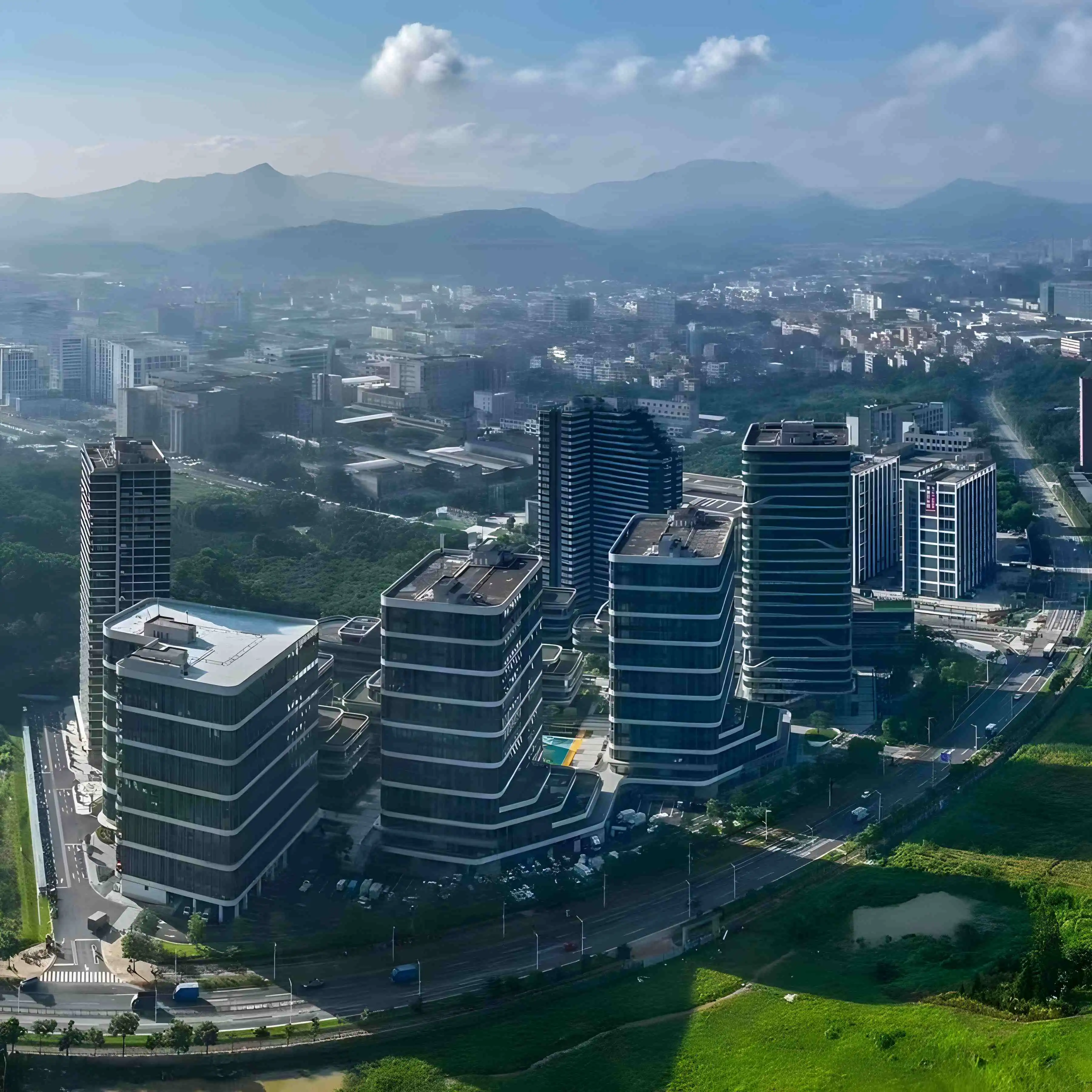
LED Neon Flex Strip Factory - Leading Professional Flexible LED Strip Manufacturer from China
